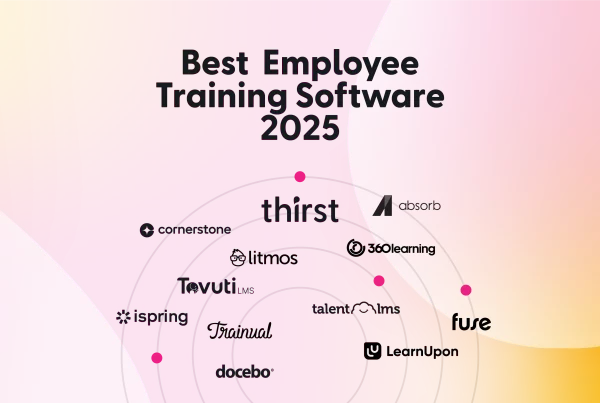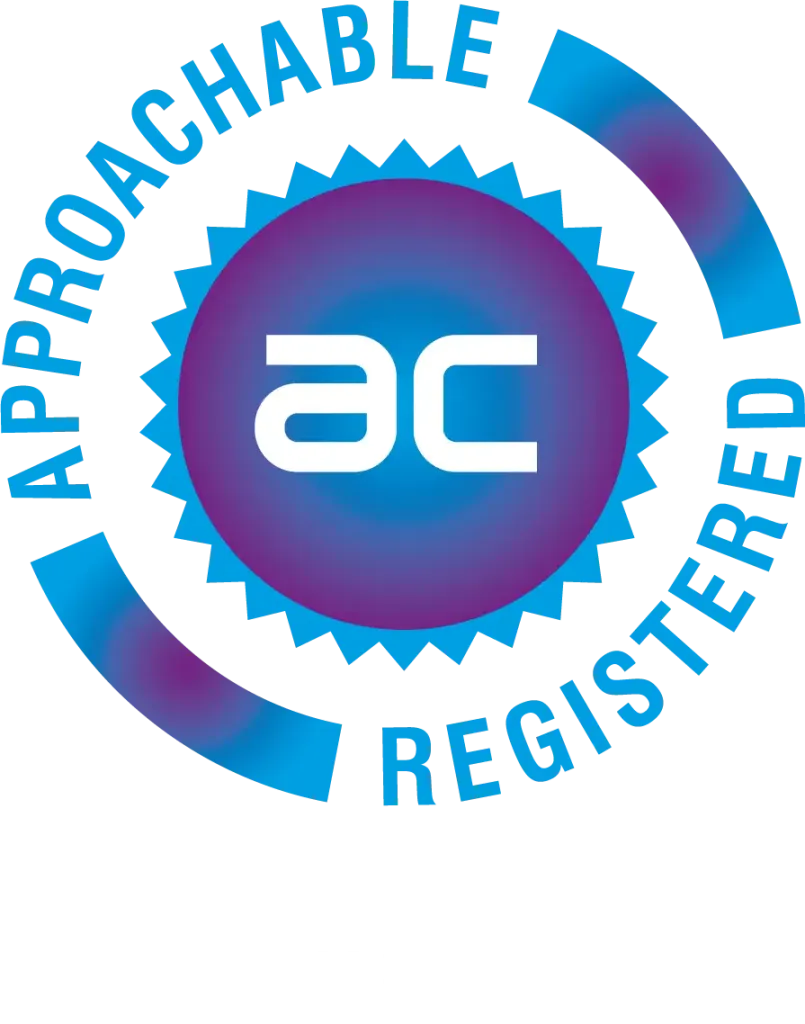So, you’ve committed to cultivating a culture of excellence within your organisation. 🙌
You know that your greatest asset is your workforce.
Your ambition is to optimise performance. Transform any weaknesses into strengths. Support continuous professional and personal development.
95% of employees say that they’ll remain loyal to an organisation that offers them training opportunities. But training is only as good as the knowledge and experience people gain from it.
But how do you identify it? By gaining an understanding of learning evaluation models.
Think about it this way: your team is well-educated. Highly skilled. Very capable.
You want to keep them together. Build on existing success and help them achieve their ambitions.
For this, you’ll need to evaluate learning models. Identify the ones that will help employees—and the business—to excel.
Remember, learning evaluation is only as good as the method you use to measure performance.
If you don’t elect the right measurement methodology, you won’t be able to gain the sufficient insight needed for teams, departments, and the business as a whole to prosper.
Below is everything you need to know about learning evaluation models.
From a definition of learning evaluation models to their benefits, the ten common models, and how to decide the best model for your organisation.
Interested in learning how you can transform and optimise the proficiency of your organisation’s L&D? Keep reading below. 👇 👇 👇
What is a learning evaluation model?
A learning evaluation model is a resource that allows organisations used by L&D professionals—and organisations as a whole—to assess the effectiveness of training programmes and learning interventions.
There are a range of learning evaluation models. Each helps organisations decide if their specific learning objectives have been achieved while measuring their impact on learners and the organisation as a whole.
Choose to employ learning evaluation models, and you’ll discover a great way to align your training programmes with business strategies. Better still, organisations can tailor an evaluation model to specific assumptions, criteria, and methods. This is vital to achieving sustained performance growth year after year. ☺️
Benefits of using learning evaluation models
The overarching benefit of training evaluation models is that they’re a great way of assessing all training initiatives’ success. This allows organisations to tailor L&D to achieve the best ROI across the organisation. 🙌
Basically, when organisations know which initiatives resonate best with their teams, they can tailor, run, and repeat L&D initiatives for maximum impact.
That’s it in a nutshell.
But what are the specific benefits of employing learning evaluation models within your organisation’s commitment to L&D?
Below are five specific reasons why training evaluation models are not just advised but paramount to sustained commercial growth. 📈
👉 They measure the effectiveness of any training
This has already been outlined in this article. And it’s quite self-explanatory, but training evaluation models provide structured methodologies to measure training effectiveness.
By assessing participant reactions, learning outcomes, changes in behaviour, and organisational impact, you’ll be able to see if the models align with any desired outcomes and performance improvements.
👉 They identify specific strengths and weaknesses
Evaluation models help L&D teams identify the strengths and weaknesses of their training initiatives. By collecting and analysing data at various training intervals, organisations can pinpoint which training attributes have been successful and which may need tweaking. ✅
The insights tell organisations a few things. Firstly, if the L&D training content bolsters employee value, Secondly, if the training delivery methods have been successful, and thirdly, if the training strategies have built the required knowledge to improve upon existing strengths while minimising weaknesses.
👉 They encourage accountability
Another benefit of rolling out company-wide training evaluation models is that they encourage greater accountability by addressing core competency gaps while meeting deliverables without compromising on performance.
This means that organisations can hold themselves accountable for the success of all L&D initiatives, both for individuals and teams.
👉 They foster future planning
Organisations that identify the success of their L&D programmes can assess employee development, their knowledge, skills, and value. This is great for finding out which people have the most potential and earmarking them for potential promotion in the future. 🚀
Upon measuring training effectiveness, the information can be fed into talent management strategies, creating an internal pipeline of skilled people able to step up when a vacancy becomes available.
👉 They highlight employee engagement and satisfaction
People who recognise that an organisation is investing in their professional development are happier. They often remain loyal to the organisation while being motivated to perform their roles to the best of their ability.
By measuring L&D effectiveness, organisations can gain a strong understanding of the impact L&D has had on employee engagement. This means that organisations can tailor future programmes to meet employee needs and improve general satisfaction. 🥰
10 Most Common Learning Evaluation Models
As we’ve previously noted, there are several learning evaluation models that the L&D sector uses to assess the effectiveness of training programmes and interventions.
These models help organisations determine whether learning objectives have been achieved and if the training has had a positive impact on learners and the organisation as a whole.
Below is a list, along with a brief description, of some of the more prominent learning evaluation models:
Learning transfer evaluation model
LTEM (Learning Transfer Evaluation Model) is used to evaluate the effectiveness of training and learning interventions. It focuses on assessing the transfer of learning from a training context to a workplace context. LTEM is structured into eight levels and is used as a guide to create better cyclical improvements.
These eight levels are:
- Assess learners’ participation in any L&D using attendance and completion metrics to understand whether learners have completed the training as intended.
- Divide learning activity into three correlated sub-levels (attention, interest, and participation).
- Record learners’ perspectives to see if this aligns with the results.
- Test learners’ knowledge based on their recalling and retention capabilities using, for example, AI tools such as question generators and automated question papers.
- Analyse the decision-making abilities of learners’ by providing real-life simulations to ensure that decision-making skills remain despite a portion of the knowledge gained being lost.
- Combine learners’ decision-making skills with their ability to convert plans into actions, showcase results, and look for ways that further training can improve performance.
- Measure learners’ ability to transfer knowledge acquired to their workplace performance while recognising the correlation between the workplace environment and learners’ skills.
- Determine how learners’ newly acquired skills are transferred to colleagues, clients, friends, etc., and measure the positive and negative effects of these skills.
Kirkpatrick’s Four Levels of Evaluation
Developed by Dr. Donald Kirkpatrick in the 1950s, the Kirkpatrick Model of Evaluation is commonly employed by organisations and divides learning evaluation into four levels:
👉Level 1: Reaction, which gauges learners’ immediate reactions to training
👉Level 2: Learning, which assesses the extent to which participants have acquired the intended knowledge and skills
👉Level 3: Application, which examines whether participants apply what they have learned on the job
👉Level 4: Measurement, which calculates the impact of training on organisational goals and outcomes
Phillips’ ROI (Return on Investment) Model
The Phillips ROI Model builds on the Kirkpatrick Model, partnering the costs of the training model with actual results and classifying data from different types of employee training to measure:
- Reaction: Training managers use short surveys to gather data from participants about their responses to any training undertaken.
- Learning: participants complete an MCQ survey or quiz before and after training, which allows training managers to see how much knowledge has been acquired.
- Application and implementation: training managers review why the training has been a success or failure. This qualitative feedback allows organisations to improve their training programmes.
- Impact: organisations and their training managers can analyse the impact of training content and other factors that contribute to participants’ final performance.
- Return on investment: organisations can use cost-benefit analysis to map impact data and calculate the monetary (and intangible) benefits of the training. Training managers can then use this data as hard evidence to prove the value of training to the organisation’s decision-makers.
Brinkerhoff’s Success Case Model
Proposed by Rob Brinkerhoff, the Success Case Model (SCM) is defined as a low-cost, high-yield evaluation that compares the most successful and least successful aspects of implemented change. 🙌
To do this, organisations employing the SCM answer a series of questions using qualitative and quantitative data to answer the following:
- How has the training been used?
- What have been the benefits?
- What problems did you encounter?
- What are the negative consequences?
- Define the criteria that determine whether or not L&D potential has been achieved.
Remember that SCM is not limited to learning interventions but involves several variables that account for results. Identify the most and least successful attributes of your training, and you’ll clearly be able to see successes and failures. 🙌
This allows organisations to make specific changes that address shortcomings and effectively showcase L&D prowess to senior decision-makers.
The only real caveat to employing SCM is that it is better used alongside more tangible evaluation methods for ongoing insight.
Anderson’s Model of Learning Evaluation
First published in 2006, Anderson’s Value of Learning is a high-level, three-stage evaluation model that aims to address two main challenges: evaluation and value. The model is split into three stages:
Stage One: 👉 determining if L&D is aligned with strategic priorities.
Stage Two: 👉 evaluating training results using methods like ROE (return on expectation), ROI (return on investment), learning function, benchmark, and capacity.
Stage Three: 👉 establish approaches that are tailored to your organisation.
Don’t forget that 91% of high-performing organisations align their L&D with strategic organisational goals. This means that the Value of Learning Model has direct, strategic, and tailored benefits for organisations. 💸
Best of all, this model allows organisations to determine if the right metrics are being used to achieve their strategic aims.
However, it should be noted that, although Anderson’s Model of Learning Evaluation delivers effective strategic insight, it is best employed alongside other models of learning for more robust insight.
Kaufman’s Model of Learning Evaluation
Kaufman’s Model of Learning Evaluation is based on Kirkpatrick’s four levels of evaluation, with two significant changes: dividing reaction into input and process and adding a fifth level of post-measurement to better determine the wider benefits for people or wider society.
Also, the model allows organisations to evaluate learning programmes individually. This allows organisations to identify ineffective programs.
Some businesses do not employ the fifth evaluation level; however, it does have its benefits. For one, any customer service training has been effective. It can also measure customer service performance prior to and after training.
CIPP Model (Context, Input, Process, and Product)
This comprehensive, decision-oriented model evaluates various L&D aspects, focusing on the context, input, process, and resulting product or outcomes of the training to identify strengths and limitations in both the programme itself and its delivery.
Organisations use this model to focus on detail-oriented management, with the goal being to achieve continuous improvement. 🤔
Guskey’s Five Levels of Professional Development Evaluation
This model specifically applies to professional development and teacher training, assessing participants’ reactions, learning application, organisational impact, and student outcomes.
There are five levels of data gathering in professional learning and development. These are as follows:
Level 1: Participants’ reactions
Level 2: Participants’ learning
Level 3: Organisational support and change
Level 4: Participants’ use of knowledge and skills
Level 5: Student learning outcomes
When designing a L&D course, the trick is to widen the scope as professional development evolves. For clear learning outcomes to be achieved, data that reflects the outcomes should be leveraged.
Also, when operating this model within an organisation, the levels should be inverted, with outcomes being the first and primary focus and participant reactions being the last data-gathering level. 🤔
ADDIE Model (Analysis, Design, Development, Implementation, Evaluation)
Not just an evaluation model, ADDIE includes an evaluation phase to assess how effective the training programme has been. This organisational methodology is used to help organise and streamline course content production.
First developed in the 1970s, ADDIE is still the most commonly used instructional design model for one reason: it’s simple and effective.☺️
ADDIE stands for the five stages of a development process: analysis, design, development, implementation, and evaluation. The model relies on each stage being completed in order. This gives you a streamlined, focused approach, complete with feedback for continuous improvement.
CIRO Model (Context, Input, Reaction, Outcome)
Developed by Peter Warr, Michael Bird, and Neil Rackham, the CIRO model considers training outputs, what participants have learned, and the overall impact outcome, precisely determining how effective any L&D training has been.
Like some other training evaluation models, most notably Guskey’s Five Levels of Professional Training Evaluation, the CIRO model is hierarchical, meaning that practitioners must complete every level sequentially to gain optimal impact: context, input, reaction, and outcome.
However, unlike other learning evaluation models, the CIRO model is specifically aimed at evaluating management training, meaning that it can be broadly applied to several roles within an organisation.
Best learning evaluation model
When all’s said and done, the best learning evaluation model is the one that’s ideally suited to your organisation’s people and short- and long-term goals. 😏
The most widely used model is Kirkpatrick’s four levels of evaluation. However, just because it’s the most popular doesn’t mean that it’s right for you.
To learn which evaluation model suits your organisation, it’s always wise to know your goals and do a bit of research. What you don’t want is to invest time and money into your L&D only to discover that it has not had the desired impact.
Final Thoughts
Optimise your L&D, and you’ll optimise your organisation’s performance at all levels. Turn weaknesses into strengths. Support the continuous professional and personal development of everyone and prosper… you can’t do this without knowing how to evaluate your L&D.
Choose a learning and evaluation model that allows you to gain significant insight into its performance and potential. Not only that, but it also demonstrates that your organisation is concerned about measuring the L&D impact and elevating everyone.
Best of all, organisations will be able to gain significant training insight and, if needed, adjust the focus of any professional training to reach their goals.
Choose Thirst, and we can help you achieve an effective learning evaluation model.
Our AI-powered learning platform empowers L&D professionals to accelerate their learning culture, talent acquisition, leadership and development, and internal mobility.
What does this mean for you?…An optimised L&D evaluation experience!
Interested in learning more? Book a demo today.👍
For more e-learning insights, resources and advice, read the Thirst blog…
Why is Constructive Feedback Important? The Ultimate Guide | Hard Skills v Soft Skills: The Main Differences [+Examples] | The Importance of Learning in the Flow of Work for L&D







